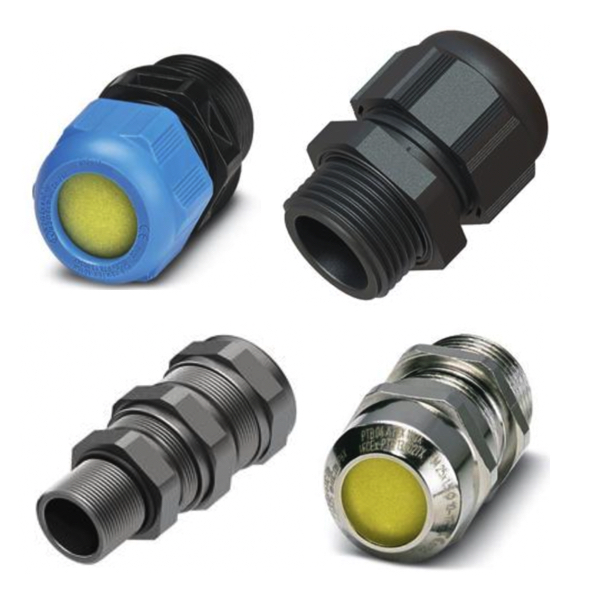Cable Glands

RSP Supply carries a wide selection of cable glands designed to provide secure, sealed connections for cables entering electrical and industrial enclosures. Built for performance and protection, these glands help maintain system integrity, provide strain relief, and prevent contaminants such as dust, dirt, and moisture from compromising equipment.
Cable glands are essential components used to fasten and protect the ends of cables while maintaining electrical continuity and mechanical retention. They are used across a range of industries; from automation and manufacturing to marine, construction, and outdoor electrical installations. Their primary role is to ensure safe cable entry into junction boxes, control panels, and equipment housings. Waterproof and dustproof options are available with O-ring seals and IP-rated protection, making these glands suitable for both indoor and outdoor use where environmental exposure or liquid ingress is a concern.
FAQs
Q: What is the primary function of a cable gland?
A cable gland secures the end of a cable entering an enclosure, providing strain relief and environmental sealing to prevent dust, dirt, and liquid intrusion.
Q: Can a cable gland with an O-ring seal multiple cables at once?
No, a cable gland with an O-ring is designed to seal a single cable; using it for multiple cables can compromise its sealing effectiveness.
Q: What materials are cable glands made from?
Cable glands are commonly made from materials such as plastic (polyamide), brass, stainless steel, aluminum, and nickel-plated brass, each suited to specific applications and environments.
Q: Are cable glands considered electrical connectors?
Cable glands are not connectors or plugs; they are mechanical fittings used to secure and seal cable entries into enclosures.
Q: What IP ratings are typical for waterproof cable glands?
Most waterproof cable glands are rated IP67 or higher, ensuring protection against dust ingress and temporary immersion in water.
Why Buy Cable Glands from RSP Supply
RSP Supply offers high-quality cable glands from trusted manufacturers, available in a range of sizes, materials, and sealing types. All products are tested for durability and reliability, ensuring proper strain relief and environmental protection for every electrical installation. Fast shipping and knowledgeable support make it easy to find the right gland for your application.

